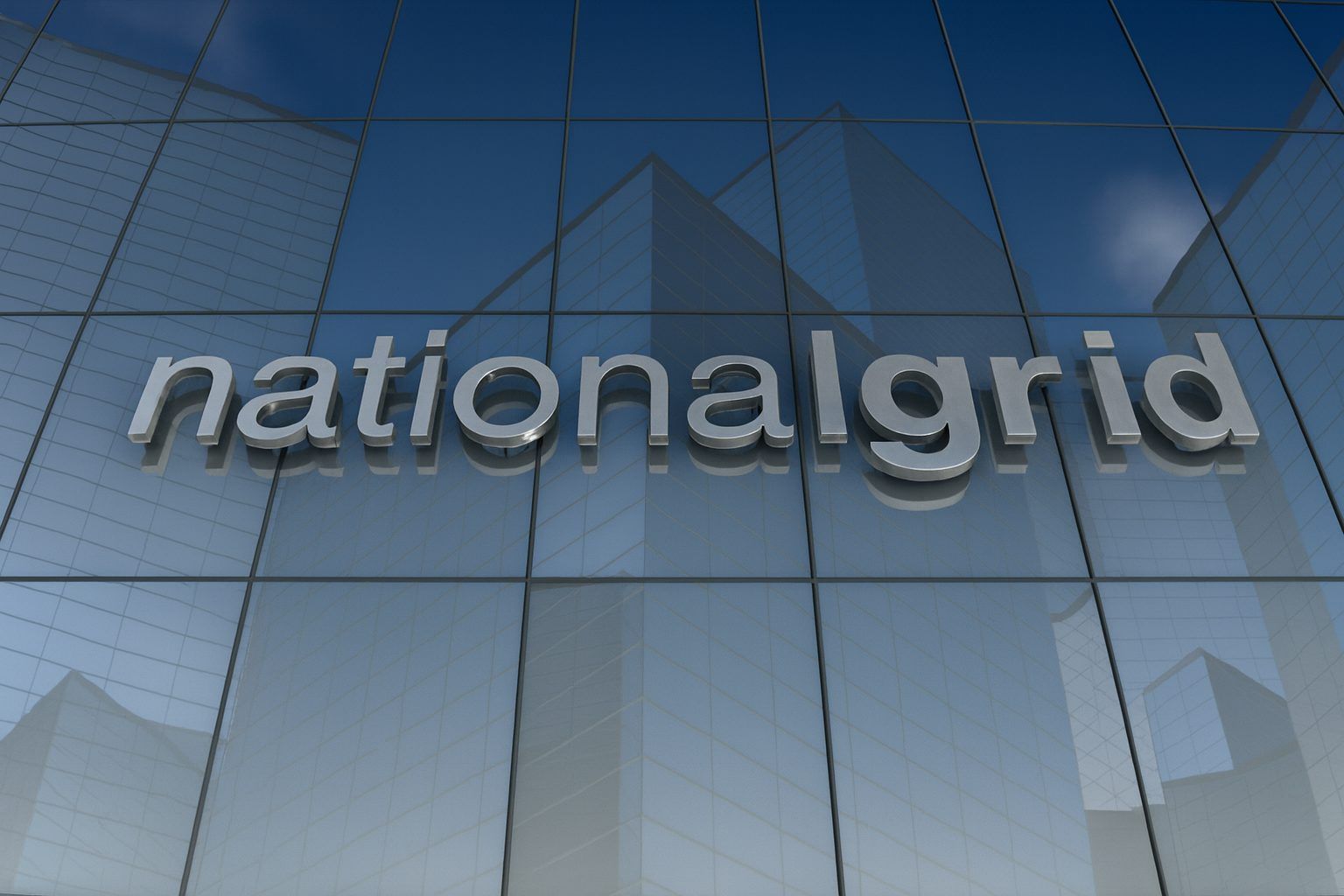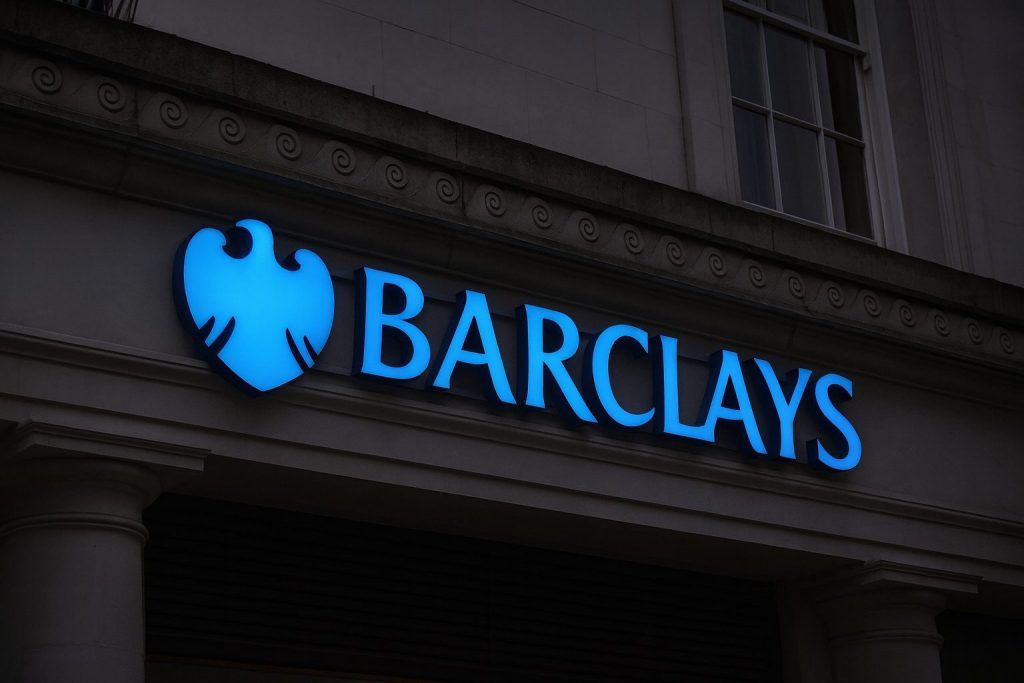Key takeaways for today
- Share price: National Grid plc is trading around 1,141–1,142p today, down roughly 0.2–0.3% after opening at 1,145p, leaving the FTSE 100 utility near the upper end of its 52‑week range of about 910p to 1,184p. [1]
- Valuation snapshot: At this level, the stock carries a market cap of roughly £57bn, a trailing P/E near 19.6, a forward P/E around 14, and a dividend yield in the 3–4% range depending on methodology. [2]
- Fresh infrastructure news (today): National Grid has published final proposals for two new 400kV substations at Weston Marsh in Lincolnshire, designed to plug in offshore wind, solar and battery projects and help meet surging regional demand. [3]
- Strategic momentum (this week): The company has joined the Northern Powerhouse Partnership, highlighting a wave of grid investment across northern England that National Grid says could help support up to 55,000 UK jobs by 2030. [4]
- Dividend mechanics: The scrip dividend reference price for the 2025/26 interim payout has been set at 1,130.40p per ordinary share, with ADR holders able to take stock instead of cash at $74.2334 per ADR; the interim dividend itself is 16.35p per share (or $1.0657 per ADR). [5]
- Institutional flows: Major institutions continue to feature prominently on the register: BlackRock has nudged its stake up to 8.17%, and several US funds have reported incremental buying of the NYSE‑listed ADRs (NGG). [6]
- Backdrop: All of this sits on top of earlier half‑year results showing double‑digit growth in underlying profit and record £5bn half‑year capex, alongside a planned £60bn investment programme through 2028/29. [7]
National Grid share price today: a quiet move after a strong month
In Friday trading (28 November 2025), National Grid plc (LON: NG) is edging slightly lower, changing hands at roughly 1,141–1,142p, a drop of about 0.2–0.3% on the session after opening at 1,145p. [8]
According to real‑time London data, today’s intraday range sits around 1,141p to 1,145.5p, with volumes a bit below the recent daily average of just over 700,000 shares. [9]
Over the last month, National Grid has traded close to the upper end of its 52‑week band (about 910p–1,184p), helped by: [10]
- solid half‑year earnings;
- confirmation of a rising interim dividend;
- visibility on a very large multi‑year capex programme;
- and growing attention on electricity infrastructure as AI data centres and electrification ramp up UK power demand. [11]
Short term, today looks more like a pause for breath than a decisive move — but under the surface there is a lot of news flow that matters for long‑term holders.
New infrastructure news: Weston Marsh substations and the Great Grid Upgrade
Weston Marsh: two new 400 kV substations proposed
The most clearly “new today” company‑specific development is in Lincolnshire.
Industry outlet Transformers Magazine reports that National Grid has published final proposals for two new electricity substations at Weston Marsh, intended to support major new connections into the expanding UK transmission network. [12]
Key points from those proposals: [13]
- Weston Marsh Substation A
- A 400kV air‑insulated site.
- Will connect the Outer Dowsing Offshore Wind Farm and ultimately form part of the planned Walpole–Grimsby transmission route.
- Footprint of about 10.6 hectares, with equipment up to 12.5m high and gantries up to 15m.
- Construction expected in two phases, starting as early as 2028, with completion targeted for 2030.
- Weston Marsh Substation B
- Slightly smaller at around 8.4 hectares.
- Designed with connection points for solar farms, battery storage and other energy projects, supporting the proposed East Leicestershire overhead line.
National Grid argues that both chosen sites avoid obvious constraints, such as nearby gas pipelines and pumping stations, and says the schemes would include extensive planting and landscaping to minimise visual impact. Crucially, the company frames the projects as essential, pointing out that electricity demand in Lincolnshire and across the UK is expected to double by 2050, outgrowing the capacity of today’s network. [14]
For investors, Weston Marsh is another brick in the same wall: large, long‑dated, regulated investment connected to offshore wind, storage and new grid routes, directly in line with the group’s capex strategy.
Northern Powerhouse Partnership: signalling where the money is going
The other big strategic news this week is National Grid’s decision to join the Northern Powerhouse Partnership (NPP), announced in an official company press release dated 27 November 2025. [15]
In that statement, National Grid highlights: [16]
- Its role in The Great Grid Upgrade, a programme of transmission investments linking more clean power into the UK system.
- Major northern projects including Eastern Green Link 1 and 2, Yorkshire Green, and proposed lines such as North Humber to High Marnham and the Cross Border Connection.
- An expectation that its network investment could support up to 55,000 jobs across the UK by 2030, with a substantial share in northern England.
- Concrete examples like around 200 jobs (including apprenticeships) on the Eastern Green Link 2 project, and “meet the buyer” events connecting hundreds of northern SMEs into the supply chain.
The partnership is partly political signalling, but it also reinforces a simple point: National Grid is positioning itself as the backbone of regional re‑industrialisation and the net‑zero build‑out in the North – something that has obvious implications for both growth and regulatory relationships.
AI, data centres and exploding power demand
The AI angle is increasingly hard to ignore in any UK grid discussion, and today it’s being spelled out in mainstream regional press.
In a Yorkshire Post opinion piece published this morning, tech investor David Richards argues that electricity, not algorithms, is now the main bottleneck for AI. He notes that: [17]
- One gigawatt can power roughly 750,000 homes.
- The UK government’s minimum target of 6GW of AI‑related data‑centre capacity by 2030 is equivalent to the power demand of about 4.5 million households.
- Data‑centre developers have already announced 500–900MW of new UK facilities, with at least one operator reportedly targeting 1GW of dedicated AI capacity within three years.
- Most strikingly, National Grid is currently processing up to 19GW of connection requests from data‑centre operators by 2031 – a load comparable to the electricity use of more than 14 million homes.
For National Grid, AI is not a buzzword so much as a giant source of new peak demand that must be physically wired into the system. The Weston Marsh substations, the Eastern Green Link projects and Ofgem’s ASTI (Accelerated Strategic Transmission Investment) framework are all parts of the same story: a massive, capital‑intensive build‑out of UK high‑voltage infrastructure to keep up with electrification and data‑centre growth. [18]
Dividend and scrip update: mechanics behind the income stream
Interim dividend and scrip reference price
Income investors got important mechanical clarity on 27 November 2025, when National Grid confirmed the details of its 2025/26 interim dividend scrip.
According to a company‑based report carried by Investing.com: [19]
- The scrip reference price for the interim dividend has been set at 1,130.40p per ordinary share.
- For the ADR (NGG), the scrip reference price is $74.2334 per ADR, reflecting five ordinary shares per ADR and the applicable FX rate.
- The interim dividend itself – first announced with the half‑year results – stands at 16.35p per ordinary share and $1.0657 per ADR. [20]
- Ex‑dividend dates were 20 November 2025 for London‑listed ordinary shares and 21 November for the NYSE ADRs, with a record date of 21 November. [21]
- Election deadlines for receiving the dividend in shares are 8 December 2025 (ADR holders) and 11 December 2025 (ordinary shareholders).
- The interim dividend is scheduled to be paid on 13 January 2026.
ADR holders opting for cash rather than scrip face a small $0.01 per ADR fee on the interim dividend, whereas scrip recipients avoid that charge. [22]
What does that imply for yield?
On today’s share price around 1,141–1,142p, different data providers calculate slightly different forward yields:
- StockAnalysis puts the trailing dividend at £0.47 per share, implying a yield of roughly 4.1% on recent prices. [23]
- Dividend tracker Digrin, focusing on the latest 16.35p interim payment and its forward assumptions, shows a forward yield closer to 2.9%. [24]
The discrepancy mainly comes down to what you assume for the full‑year total and how you annualise a single interim payment. The company itself signalled in November that the interim dividend represents 35% of the prior year’s full dividend, which is consistent with a broadly progressive policy rather than a step change. [25]
Half‑year results: record investment, resilient earnings
National Grid’s latest half‑year numbers (H1 2025/26), released on 6 November 2025, still provide the fundamental backdrop for today’s trading.
From the company’s own results statement and subsequent coverage: [26]
- Operating profit rose 17% to £1.53bn (statutory).
- Underlying operating profit climbed 12% to £2.29bn.
- Profit before tax increased 21% to £826m, with underlying PBT up to £1.65bn (from £1.44bn).
- Statutory EPS held roughly flat at 12.6p, but underlying EPS grew 6% to 29.8p.
- The interim dividend was lifted 3% to 16.35p, maintaining the board’s stated aim of growing the payout in line with earnings and inflation over time.
- Capital investment for the half reached about £5.05bn, up 10% year‑on‑year and described by the company as a record for a half‑year period.
Management also reiterated a five‑year investment plan of around £60bn between 2024/25 and 2028/29, targeting: [27]
- regulated asset growth of roughly 10% per year;
- underlying EPS growth of 6–8% per year from a FY 2024/25 baseline;
- and regulatory gearing rising towards the mid‑60% range by March 2029, before easing later in the RIIO‑T3 period.
Those numbers are why the share price has been creeping upwards over the last year – Investing.com estimates a 15% one‑year gain – even if today’s move is modest. [28]
Valuation, institutional interest and analyst sentiment
Valuation snapshot
On today’s price, StockAnalysis estimates that National Grid is trading on: [29]
- a trailing P/E of about 19.6,
- a forward P/E near 13.9,
- and a market cap of roughly £56.8bn, supported by trailing twelve‑month revenue of £17.5bn and net income of about £2.9bn.
Independent fair‑value models are, as ever, opinionated. ValueInvesting.io, using a Peter Lynch‑style framework, pegs National Grid’s “fair value” at roughly 1,394p, implying potential upside of just over 20% versus prices recorded around 1,139p on 22 November. [30]
The conclusion from these snapshots is that National Grid now trades at a moderate premium to its own history, but not at bubble levels – consistent with a staple regulated utility that also carries a sizeable growth capex story.
Big investors still buying – but brokers are split
Two strands of recent news illustrate how the market is reacting:
- Long‑term holders adding
- A Form TR‑1 filed with the London Stock Exchange shows BlackRock, Inc. increasing its total interest in National Grid to 8.17% of voting rights as of 24 November 2025, equivalent to about 406.6m voting shares. [31]
- In the US, 13F filings reported by DefenseWorld show smaller institutions such as Coldstream Capital Management raising their stakes in the NYSE‑listed ADR (NGG) during the second quarter, alongside adjustments by other asset managers. [32]
- More cautious broker calls
- Earlier in November, MarketScreener flagged a downgrade by BNP Paribas Exane, which cut its rating on National Grid to “Underperform” and trimmed its price target, a move that coincided with a dip in the shares. [33]
Add in recent commentary from outlets such as MoneyWeek, which argues that UK equities are broadly undervalued even as internationally‑facing groups like National Grid have grown far beyond their domestic roots, and you get a picture of a stock that is widely owned, not unloved – but also not universally cheap. [34]
Regulation, Heathrow probe and other key risks
National Grid’s appeal as a dividend‑paying infrastructure giant comes with a set of non‑trivial risks, several of which remain live going into 2026.
Heathrow fire and potential securities claims
A March 2025 fire at the North Hyde substation, which temporarily shut London’s Heathrow Airport, continues to cast a shadow.
A report cited in a Reuters‑referenced legal notice concluded that the incident was tied to “preventable” failures in substation maintenance, with issues reportedly identified several years earlier. This prompted Ofgem to open an investigation into National Grid’s performance. [35]
In the United States, Rosen Law Firm and other investor‑rights firms have been soliciting shareholders for potential securities class actions, alleging that National Grid may have issued misleading business information prior to the incident. At this stage, these are investigations and solicitations, not certified class actions, and no court has found wrongdoing. [36]
Still, the Heathrow episode underlines the operational and reputational risk of high‑profile grid failures, especially when they intersect with airports, hospitals or data centres.
Regulatory environment in the UK and US
On the UK side:
- Ofgem’s ASTI framework is providing accelerated construction funding for strategic transmission projects – including schemes involving National Grid and SSE – to secure materials and carry out early works. But the regulator has stressed this is not a blank cheque, and developers must prove eventual consumer benefit or face disallowances. [37]
- National Grid is also navigating the next round of RIIO‑T3 price‑control decisions, where allowed returns, cost‑sharing mechanisms and performance incentives will shape profitability for years. [38]
In the US, National Grid’s regulated utilities are engaged in a steady stream of filings, such as a recent petition to Massachusetts regulators to update SMART solar‑programme tariffs, with the Department of Public Utilities (D.P.U. 25‑165) inviting public comments up to 28 November 2025 on a proposal to recover roughly $131m through revised SMART factors. [39]
Taken together, these processes highlight that regulatory goodwill is an asset just as important as transformers and cables.
Balance sheet and interest‑rate sensitivity
National Grid’s own communications and third‑party coverage emphasise that the company is carrying over £40bn of net debt, with regulatory gearing projected to drift into the mid‑60% range as the £60bn capex plan runs its course. [40]
That leverage is typical for a network utility but leaves earnings and dividend cover sensitive to interest rates, credit spreads and rating‑agency views. The company’s strategy explicitly assumes the maintenance of strong credit ratings to fund its pipeline at acceptable costs. [41]
So what does today’s news flow mean for National Grid investors?
For 28 November 2025, National Grid’s share price story is not about fireworks on the tape – it’s about the continued accumulation of evidence that the company is at the centre of a very large, very long‑term build‑out of electricity infrastructure.
Here’s how today’s and this week’s developments fit together:
- Growth thesis reinforced
- The Weston Marsh substation plans add another tangible, multi‑year project linked to offshore wind, solar and storage. [42]
- Northern Powerhouse Partnership membership lines up neatly with the UK government’s “levelling up” rhetoric and highlights the regional economic impact of National Grid’s capex. [43]
- AI‑driven power demand, as described by Yorkshire business leaders, suggests that data‑centre connections could be a structural tailwind for decades, rather than a short‑term fad. [44]
- Income story remains intact – but complex
- Valuation is fair to full
- National Grid now trades on a high‑teens trailing P/E, with at least one major broker on the cautious side, though some fair‑value models still see double‑digit upside from current levels. [47]
- Risk factors are real but (so far) manageable
- The Heathrow fire investigation and related securities‑law probes remain unresolved, injecting legal and political uncertainty even as the company cooperates with regulators and stresses its reliability record. [48]
- High leverage and regulatory dependence mean that errors in execution, cost control or safety could have outsized consequences. [49]
From a purely factual standpoint, today’s modest price dip does not signal a break in the investment story. Rather, 28 November 2025 adds another layer of evidence that National Grid is simultaneously:
- a core FTSE 100 income stock,
- a key enabler of the UK’s net‑zero and AI ambitions, and
- a highly regulated, capital‑intensive business whose fortunes are tied to the quality of its execution and the patience of its regulators.
References
1. www.investing.com, 2. stockanalysis.com, 3. transformers-magazine.com, 4. www.nationalgrid.com, 5. www.investing.com, 6. www.investegate.co.uk, 7. www.directorstalkinterviews.com, 8. www.investing.com, 9. www.investing.com, 10. www.investing.com, 11. www.directorstalkinterviews.com, 12. transformers-magazine.com, 13. transformers-magazine.com, 14. transformers-magazine.com, 15. www.nationalgrid.com, 16. www.nationalgrid.com, 17. www.yorkshirepost.co.uk, 18. www.proactiveinvestors.com, 19. www.investing.com, 20. www.investing.com, 21. www.investing.com, 22. www.investing.com, 23. stockanalysis.com, 24. www.digrin.com, 25. www.directorstalkinterviews.com, 26. www.directorstalkinterviews.com, 27. www.directorstalkinterviews.com, 28. www.investing.com, 29. stockanalysis.com, 30. valueinvesting.io, 31. www.investegate.co.uk, 32. www.defenseworld.net, 33. www.marketscreener.com, 34. moneyweek.com, 35. www.globenewswire.com, 36. www.globenewswire.com, 37. www.proactiveinvestors.com, 38. www.directorstalkinterviews.com, 39. www.nationalgridus.com, 40. www.directorstalkinterviews.com, 41. www.directorstalkinterviews.com, 42. transformers-magazine.com, 43. www.nationalgrid.com, 44. www.yorkshirepost.co.uk, 45. www.investing.com, 46. stockanalysis.com, 47. stockanalysis.com, 48. www.globenewswire.com, 49. www.directorstalkinterviews.com










